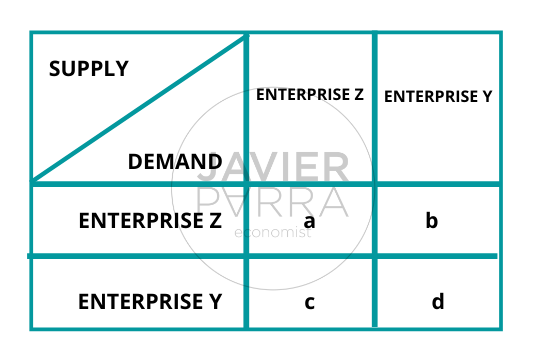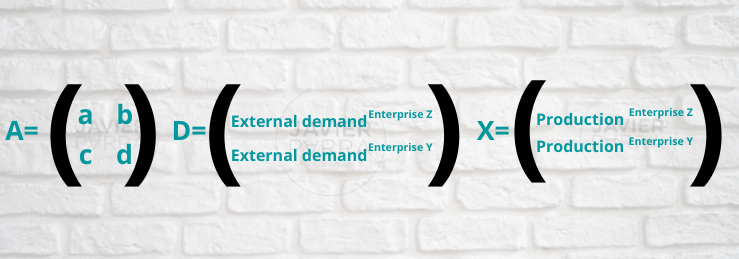Wassily Leontief was born on 5 August 1906 in St. Petersburg, Russia and died on 5 February 1999 in New York, USA. This American economist was a witness to history. As a child, he witnessed Leo Tolstoy’s death and saw Lenin speaking to a crowd in front of the winter palace. Leontief has been called the father of input-output analysis in econometrics, which won him the Nobel Prize in economics in 1973 for “the development of the input-output method and its application to large economic models”.
Wassily Leontief studied at the University of Leningrad, where he graduated in 1925 at the age of 19, and at the University of Berlin, where he graduated in 1928. In 1931 this young academic decided to leave Russia to escape censorship and moved to the United States of America to continue developing what has become his most important contribution to the world of economics, his famous input-output analysis. During this time, he taught at Harvard University until 1975, where he met Paul Anthony Samuelson. At the same time, he was director of the Harvard Economic Research Project on the American economy’s Structure (from 1948 to 1975). From 1975 until his death, he was a professor of economics at New York University, where he was appointed director of the Institute for Economic Analysis.
Wassily Leontief’s input-output method and its application to large economic models
Wassily Leontief sought to answer the question of how the activities of different economic sectors affect each other. He used his method of input-output analysis, showing how products are distributed and presented for the first time in economic history, how different industries are interconnected, how they sell to and buy from each other.
The centrepiece of his complex input-output system is a table showing what individual industries buy and sell from each other. By incorporating consumers, government, foreign countries and other elements, the overall scheme of goods and services circulating in a national economy emerges. Today the input-output method of economic analysis is used in various industrialised countries for planning and forecasting.
This model is based on modifications of other models that preceded Wassily Leontief‘s, such as the Tableau économique of the Frenchman Francois Quesnay in 1758. Later, Karl Marx reduced Quesnay’s work to a matrix system of equations called simple reproduction and extended reproduction models. Later the French economist Leon Walras used a system of quotients and notions of basic Newtonian mechanics, which gave way to his equilibrium theory. Finally (during the 1920s), Leontief presented his model of tables for the US economy. Still, it was not until the 1970s that the method became popular with the advent of the computer and began to be studied by various authors.
Wassily Leontief‘s model is based on a matrix equation to determine the interrelationships between the sectors of a specific region where it is assumed that the economy is made up of various production and service sectors is an internal demand and an external demand that must be satisfied.

This, the table shows what is the relationship between Company Z and Company Y where:
- Value a shows what Company Z requires from its own production.
- Value b shows what Company Y requires from Company Z’s production.
- Value c shows what Company Z requires of Company Y’s output.
- Value d shows what company Y requires from its own production.
With this in mind, we obtain the following matrices:

From which we observe that:
- Matrix A represents the values of the table at the beginning taken to its matrix form.
- Matrix D is the external demand taken to vector.
- Matrix X is the production taken to vector, from which we are interested in finding the value of each of its elements.
We take the matrix equation:

By isolating the production vector, the system is solved.

Finally, the matrix X is cleared, and the system is solved.
Wassily Leontief was also noted for having developed linear programming, a mathematical technique for solving complex problems of economic operations. Economists had argued that a country’s exports reflect that country’s most abundant product. Still, Leontief pointed out that, although the United States has more capital than most countries, the bulk of American imports were capital-intensive goods. In contrast, its exports were labour-intensive goods, which became known as Leontief’s paradox.





